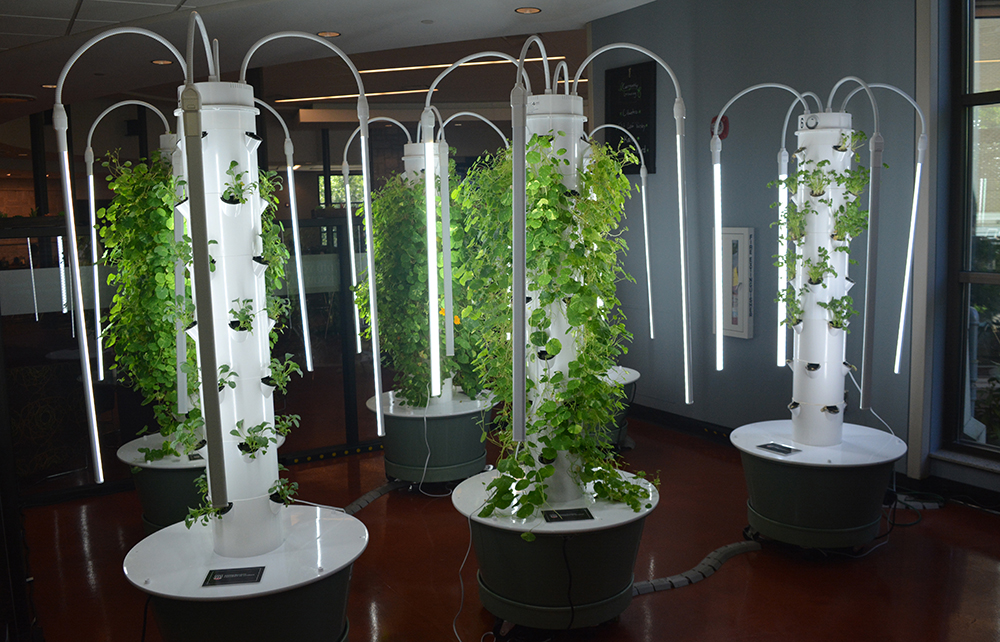Campus Grown Initiatives
Part of our sustainability effort includes making sure that we use as many local products
as we can. This focus has
gotten even closer to home with our expanding Campus Grown projects. Beginning in
September 2019, Dining Services began creating Campus Grown special salads, which
use ingredients grown straight from the vertical aeroponic Tower Gardens® at Oglethorpe
Dining Commons and produce from UGArden. These Campus Grown salads are periodically
available at East Side Deli, located in Joe Frank Harris, when new harvests arrive.
Examples of Campus Grown items include:
- Fresh salad featuring baby Swiss chard, dandelion greens, and sorrel from the vertical aeroponic Tower Gardens® at O-House topped with mixed sweet peppers and roasted tomatoes from the UGArden, Asher bleu cheese from Sweet Grass Dairy in Thomasville, Georgia, spiced Georgia pecans, and a roasted tomato vinaigrette
- Fresh salad featuring tatsoi and dandelion greens from the vertical aeroponic Tower
Gardens® at O-House and Jimmy Nardello peppers from the UGArden, topped with thinly
sliced cucumbers, daikon radish, and carrots along with ginger-roasted organic white
beech mushrooms and a spicy peanut dressing
Vertical Aeroponic Gardens Debut at Oglethorpe
Oglethorpe Dining Commons has introduced six new Tower Gardens®, a self-watering and
self-contained
aeroponic vertical gardening system. With aeroponic technology and specially formulated
nutrients, vertical aeroponics allow fruits, vegetables, herbs, leafy greens, and
edible flowers to be grown on campus. Beginning in September 2019, Dining Services
has used produce from these gardens in special Campus Grown salads at East Side Deli
in Joe Frank Harris. Dining Services plans to further incorporate harvested crops
into select menus.
Vertical Aeroponic Garden Stats:
- Each garden has an efficient 30-inch footprint.
- Seedlings are grown with 100 percent organic non-GMO seeds.
- Plants grow 2-3 weeks faster than plants growing in the soil.
- Due to the vertical design and recirculation of water in the system, the gardens also use 95 percent less water and 90 percent less land than traditional gardening.